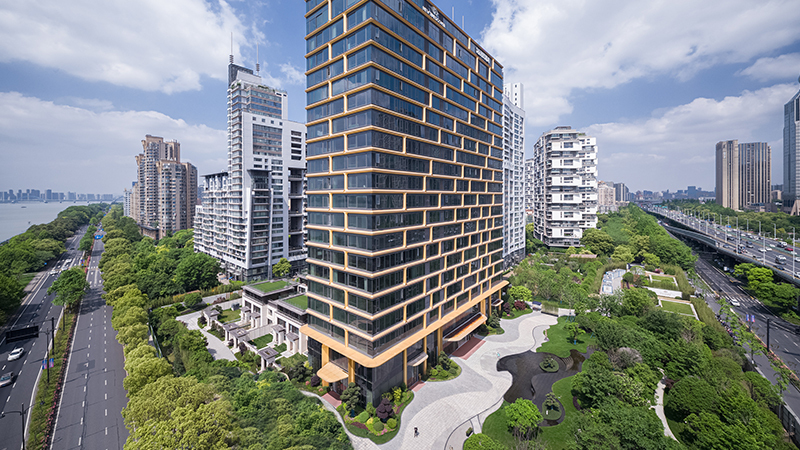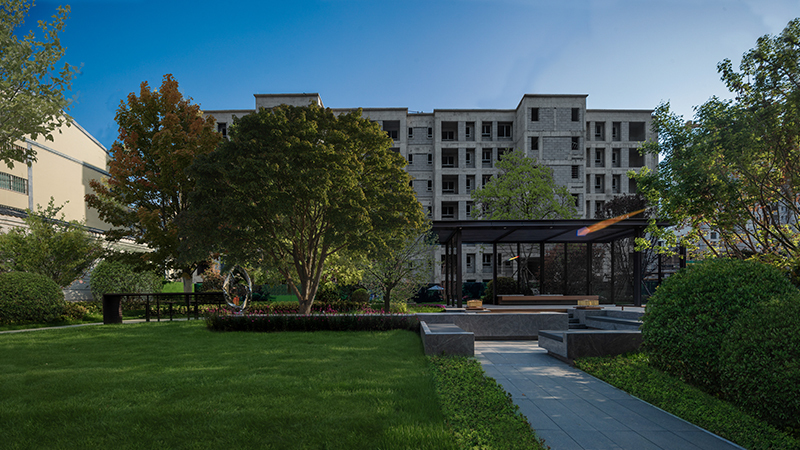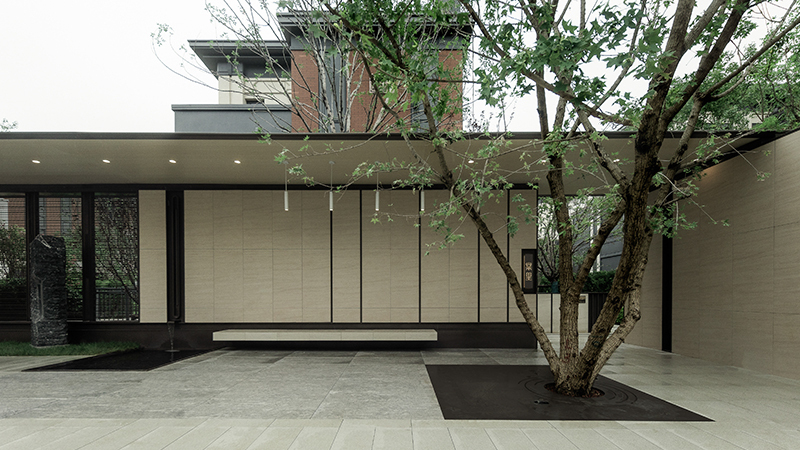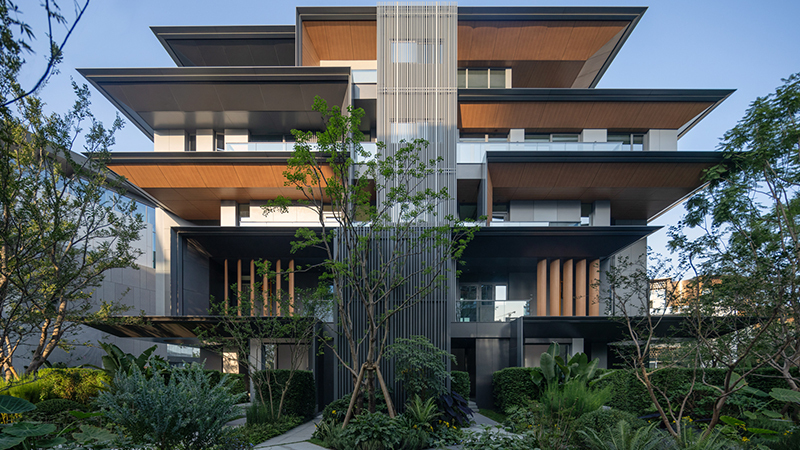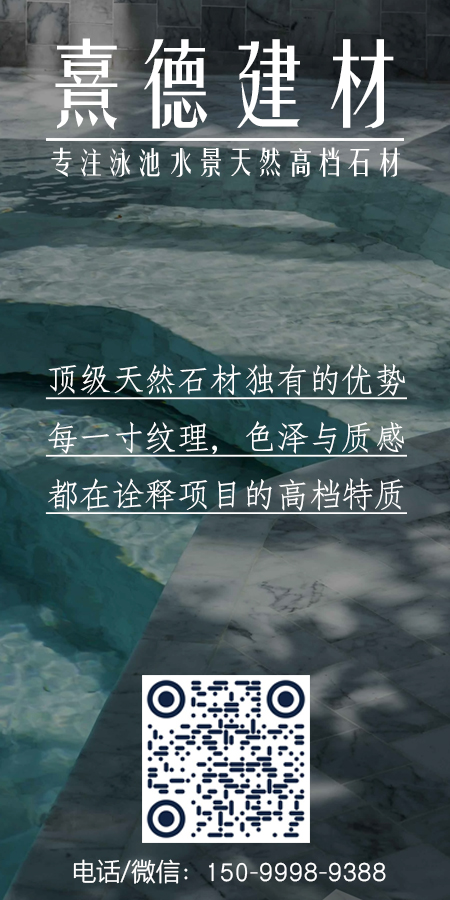| 公司: | line+建筑事务所 | 类型: | 景观 |
|---|---|---|---|
| 地区: | 中国 | 标签: | 居住社区 |
“西溪印是一次极限容量下的复合场景空间实验。在城市人工和自然生态交织的场所环境中,我们将西溪湿地中水网密布的图底关系折叠延伸至场地内部,以单元式、网格化的建筑布局对话自然肌理。”
——孟凡浩
"XIXI‘IN is a spatial experiment in high-density, multi-scenario integration. Situated at the intersection of urban infrastructure and natural ecology, the project folds the densely woven hydrological patterns of the Xixi Wetland into the site itself. Through a modular, grid-based architectural layout, it engages in a dialogue with the surrounding ecological fabric."
— Meng Fanhao
由line+联合创始人、主持建筑师孟凡浩率领团队设计的杭州星月·西溪印,摘得杭州2月商业资产成交金额之首,一季度销售额超8亿元。71户3–4层花园独栋组成的街区式园区,旨在承载办公与居住模式的全新融合。项目启动于2019年,横跨疫情常态化阶段,更让我们反思:什么是理想的办公人居空间,生活与工作的关系又该如何重新定义?
Designed by line+ studio’s Co-Founder& Chief Architect Meng Fanhao, the Hangzhou Moonstar XIXI'IN topped commercial real estate transactions in Hangzhou in February, with Q1 sales exceeding RMB 800 million. The block-style campus consists of 71 three- to four-story garden villas, crafted to accommodate a new hybrid model of work and living. Initiated in 2019 and spanning the era of the pandemic, the project also invites reflection: What defines an ideal live-work environment today? How should the boundaries between life and work be redefined?
01 空间容量的极限挑战
The Challenge of Maximum Spatial Capacity
西溪印,北及西溪湿地,南望西湖群山,且地处互联网金融核心区与城西科创走廊“龙头”位置,生态区位与城市能级使其具备了天然的吸引力和区域标识,也对其空间品质提出了更高期待。
Situated just north of the Xixi Wetland and facing the southern West Lake mountain range, XIXI'IN occupies a strategic location at the forefront of Hangzhou's Internet Finance Hub and the western Innovation Corridor. Its unique ecological setting and urban prominence naturally elevate expectations for its spatial and architectural quality.
△ 区位分析Location analysis
对建筑师来说,我们首先面临的是来自场地硬性条件的挑战:在1.4容积率与16米限高双重限定的“极限容量”下,既要满足办公与居住的混合需求,又要兼顾场地的舒适尺度、私密性与公共活力,还要平衡品牌个性与整体园区识别,以及建造成本与空间品质等矛盾。
For the architects, the primary challenge came from the site's rigid constraints: a maximum FAR of 1.4 and height limit of 16 meters. Within these tight parameters, the design had to meet hybrid live-work functions while ensuring a comfortable spatial scale, privacy, and public vibrancy. It also needed to balance brand identity, coherent district recognition, construction costs, and architectural quality.
我们从西溪湿地水网的自组织模型中获得启发,提出以“弹性容量网格”为策略路径——通过图示化的网格语言,将生态网络的组织方式转化为“建立网格—分配容量—缓冲连接”的建筑布局生成机制,为高密度场地提供高效、舒适、层次丰富的空间体验。
Inspired by the self-organizing model of the Xixi Wetland's water network, the team developed a "flexible capacity grid" strategy. This translated the ecological logic into an architectural layout system defined by: establishing a grid, allocating capacities, and introducing buffering connections. The result is an efficient, comfortable, and layered spatial experience tailored to a high-density urban context.
02 湿地水网的图示语言转译
——高密容量vs.舒适尺度
Translating Wetland Networks into Spatial Language
——High Density vs. Human Scale
场地由南北两地块组成,被城市支路分隔。根据1.4的容积率需求,我们先在用地范围内划出30-40米的“网络骨架”,对应“主弄-支巷-口袋节点”三级公共层次。整体布局以外界面连续围合、内部组团私密性为基础。根据户型需求,进一步设计了半围合式“L”型单元模块,填充入场地内部,拼合形成“T”“工”“王”等不同形态。
The site consists of two land parcels to the north and south, separated by a local street. In response to the 1.4 FAR requirement, the design introduces a 30–40m wide structural grid—a "network skeleton"—organizing the spatial hierarchy into primary lanes, secondary alleys, and pocket nodes. The layout maintains a continuous enclosure along the site perimeter, with private courtyards for internal groupings. L-shaped modules were developed from unit typologies and assembled into three interlocking configurations defined by linear, branching, and folded geometries.
单元之间交错嵌合,将公共通道与私密庭院相连接,形成“口袋花园”,在视觉上相互渗透,无需额外用地便可扩展体验边界,让空间流动通透,尺度与体验真正回归人本身。
The interlocking modules connect public walkways with private gardens, forming "pocket courtyards" that visually interweave. Without occupying additional land, the design extends spatial boundaries, enabling fluid transitions and returning the spatial scale to a human-centric experience.
节点多变、尺度不一的街区景观,有效化解高密度环境中体量压迫与容量失衡。这种南北呼应、内外贯通的布局,使网格骨架不仅成为内部体量与公共空间的组织工具,也与西溪湿地、城西公园和西湖余脉共筑生态视廊。
This variable and multi-scalar street landscape offsets the tension between density and spatial pressure. The north-south responding and inside-outside connecting layout not only organizes buildings and public realms but also aligns with the ecological corridors of Xixi Wetland, Uraban Park, and the foothills of West Lake.
03 网格秩序的弹性边界
——商业活力vs.私享生活
Flexible Boundaries Within a Grid System
— Vibrant Commerce vs. Private Living
面对办公与生活高度融合的现实需求,我们将空间功能的边界进一步拉通,创造高度复合的空间体验——商业、会所、办公、居住四位一体地整合于单栋建筑之中,以回应新时代小规模、互联网企业的空间需求。
In response to the increasingly intertwined nature of work and life, the design dissolves conventional spatial boundaries to create highly integrated mixed-use environments. Each building blends commercial, clubhouse, office, and residential functions, accommodating the spatial needs of modern small-scale internet enterprises.
场地内的每栋建筑均有独立入口和步行廊道,外围设有缓冲绿带,构建“前院—大堂—私密空间”的递进式动线。
Each building features its own entrance and pedestrian pathway, framed by peripheral green buffers that establish a spatial progression from forecourt to lobby to private interior spaces.
各层空间根据使用层级进行垂直分配:地下一层为挑高6.6米的会所展厅,可满足接待、展示、休闲等复合需求;地面一层设有接待门厅与会议空间;二至三层作为企业办公区,高管与员工办公空间可相对独立;最上层则为企业主自用的生活起居区,真正实现“上居下办”,让工作与生活自然过渡。
Vertical zoning reflects functional hierarchy: the basement level, with a 6.6-meter ceiling height, accommodates a multi-purpose showroom and clubhouse for reception, exhibition, and leisure. The ground floor houses the lobby and meeting rooms; the second and third floors are reserved for office use, with spatial independence for executives and staff; while the top floor serves as the private residence of the business owner—realizing a seamless “live above, work below” model.
△ 办公空间 Office area
△ 居住空间 Living area
在建筑设计上,我们采用大面积落地窗与无柱式空间结构,提升通透感与灵活性,同时保障空间的尺度感与使用效率。
Architecturally, large floor-to-ceiling windows and column-free layouts enhance openness and flexibility while preserving spatial scale and efficiency.
立面采用墙体与开窗错落对位的方式,确保各层空间的私密性与舒适性,避免视线干扰。挑檐、折板与深窗框景,在建筑表皮上形成一套灵动的观景机制,近瞰西溪、远眺西湖,借景自然,渗透日常。
Staggered wall and window alignments maintain privacy across floors and minimize visual interference. Projecting eaves, folded panels, and deep-set windows shape a dynamic façade system, framing curated views toward Xixi and the distant West Lake—bringing the landscape into daily life.
不同体块的虚实比例、方向与边界共同作用,使每一栋建筑既具独立性,又嵌套于组团逻辑之中。
Variations in solid-void ratios, orientation, and boundaries give each structure individual character while embedding it within a coherent campus typology.
04 温润雅致与现代活力
——整体性vs.个性化
Refined Elegance Meets Contemporary Vitality
——Holistic Cohesion vs. Individual Identity
园区建筑的整体立面形象脱胎于雅致的江南美学,融合于当代的设计语言,在整体性中创造个性化表达。材质的色彩选择跳脱于常规办公建筑的高冷基调,以跳跃的彩色打破沉闷单一的城市界面,彰显新时代复合园区的年轻活力。
The architectural language draws inspiration from the refined aesthetics of Jiangnan, interpreted through a contemporary lens to produce a cohesive yet individually expressive campus identity. Material palettes diverge from the typically austere tones of commercial buildings—inviting vibrant hues to enliven the urban streetscape and reflect the youthful energy of this next-generation mixed-use district.
根据沿城市主干道、湿地界面、内部组团等不同场地特性,共设计了5种不同的立面形态。灰色干挂石材、木色格栅、古铜拉丝铝板、点釉白玻、彩釉陶板等,鲜活灵动的建筑质感与恬静淡雅的湿地记忆优雅交融,虚与实之间光影错落、自然渗透。
Five distinctive façade types were designed in response to varied site contexts: urban arterial roads, wetland edges, and internal clusters. Materials like grey stone panels, wood-toned grilles, brushed bronze aluminum, fritted white glass, and glazed ceramic tiles strike a refined balance between vibrant architectural tactility and the tranquil atmosphere of the wetlands—creating a soft interplay of light, shadow, and porosity.
建筑形体的非常规的色彩应用和流线型的比例划分,均创造了极具辨识度的建筑形象。同时,也以温润雅致的气质融入西溪与西湖的交汇之地。
Unconventional color applications and streamlined massing proportions lend a strong visual identity while harmonizing with the gentle, elegant atmosphere of this landscape between Xixi and West Lake.
05 结语
Conclusion
未来的生活形态必将更加开放、复合、共生,而高密度也不再是某种限定,而将成为激发新型社区和生活方式的动力。
The future of urban life will be open, integrated, and symbiotic. High density, rather than being a constraint, becomes the engine for innovative communities and new modes of living.
西溪印通过生态湿地的自组织水网模型,达成了一种新的建筑布局生成机制,化解了空间容量与舒适尺度、功能混合、品牌个性与整体识别、成本与品质等多重矛盾。如今,街巷既成,日常生活正于生态与城市之间缓缓展开新的篇章。
XIXI'IN applies the self-organizing model of the wetland water network to generate a novel architectural layout—resolving tensions between capacity and comfort, programmatic hybridity, identity and coherence, cost and quality. Today, its alleys and courtyards have taken shape, and daily life begins to unfold—gently bridging ecology and urbanity.
项目名称:杭州星月·西溪印
设计单位:line+建筑事务所
主持建筑师 / 项目主创:孟凡浩
项目负责:朱明松
设计团队:苏可伦、朱敏、朱骁靖、丁健、张尔佳、徐天驹、张罕奇、涂单、谢宇庭、沈瑞、袁栋、缪纯乐、章洪良、杨雪剑、梁曦、胡绮玭、范圳、代圣轩、黄昱锟、王晓坤
业主:星月投资&北科建
景观设计(一期):line+建筑事务所
设计团队:李上阳、金剑波、饶非儿
景观设计(二期):GTS蓝颂设计
施工图合作单位:浙江省工业设计研究院
项目位置:浙江,杭州
建筑面积:82515㎡(地上),169073.6㎡(地下)
设计时间:2019.05 - 2023.10
建造时间:2019.12-2024.05
材料:拉丝铝板、石材、陶板、玻璃幕墙
摄影:奥观建筑视觉、line+、陈曦工作室
Project Name: Hangzhou Moonstar XIXI'IN
Design Firm: line+ studio
Chief Architect / Project Principal: Meng Fanhao
Project Lead: Zhu Mingsong
Design Team: Su Kelun, Zhu Min, Zhu Xiaojing, Ding Jian, Zhang Erjia, Xu Tianju, Zhang Hanqi, Tu Dan, Xie Yuting, Shen Rui, Yuan Dong, Miao Chunle, Zhang Hongliang, Yang Xuejian, Liang Xi, Hu Qipin, Fan Zhen, Dai Shengxuan, Huang Yukun, Wang Xiaokun
Client: Moonstar Investment & Beijing Science and Technology Park Construction
Landscape Design (Phase 1): line+ studio
Design Team: Li Shangyang, Jin Jianbo, Rao Feier
Landscape Design (Phase 2): GTS
Construction Drawing Consultant: Zhejiang Industry Design & Research Institute Co., Ltd.
Location: Hangzhou, Zhejiang
Gross Floor Area: 82,515㎡(above ground), 169,073.6㎡(underground)
Design Period: 2019.05 – 2023.10
Construction Period: 2019.12 – 2024.05
Materials: Brushed aluminum panels, stone, ceramic panels, curtain wall glass
Photography: AOGVISION, line+, Chen Xi Studio
更新日期:2025-08-11 16:22:10
非常感谢 line+建筑事务所 带来的精彩项目, 查阅更多Appreciations towards line+ Architects for sharing wonderful work on hhlloo. Click to see more works!


















































